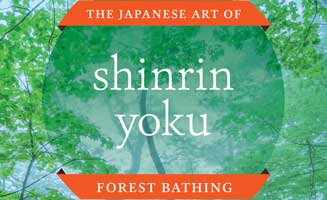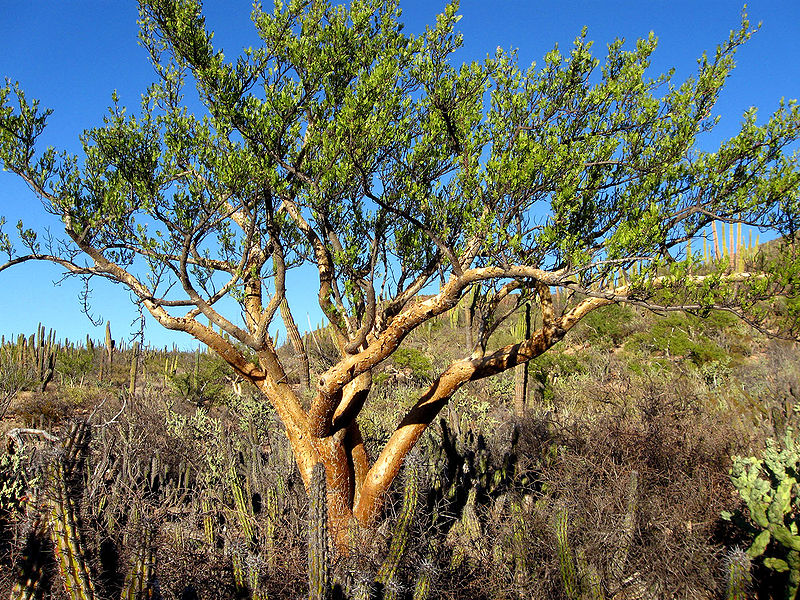

Contributor
- Topics: Archive, Nature is Good For You
 We’re stressed. And it’s making us sick. Which in turn places pressure on our medical system, the productivity of our economy, and the resiliency of our social connections. More importantly, dis-ease limits our human potential, curtails our creative life force, and causes us to draw into ourselves, rather than reach out, connect with, and strengthen our community.
We’re stressed. And it’s making us sick. Which in turn places pressure on our medical system, the productivity of our economy, and the resiliency of our social connections. More importantly, dis-ease limits our human potential, curtails our creative life force, and causes us to draw into ourselves, rather than reach out, connect with, and strengthen our community.
If anything about my previous paragraph resonates with you, pick up a copy of Shinrin-Yoku, The Japanese Art of Forest Bathing. The book is imbued with a hush, like what you’d experience on a walk, deep in the woods. The book’s design, which employs a repeating motif of page spreads bracketed by split images of forests, tree trunks, and leafy canopies, immediately drew me into a calm place. This is a book you fall into. I felt embraced.
Which isn’t to say that Shinrin-Yoku is all soft focus and touchy-feely woo woo. Author Yoshifumi Miyazaki is a professor at the Center for Environment, Health and Field Sciences at Chiba University in Chiba, Japan. His perspective, informed by his work in environmental protection, medicine, forestry, and health science, is firmly grounded in research and quantitative science.
“Intuitively, we understand that the natural world makes us feel relaxed. The idea behind nature therapy is to clarify those effects with science, and to use them as a preventative medicine to improve wellbeing in our modern world.”
Nature, specifically forests, is revered in Japan, and the Japanese aesthetic—one that links art, beauty, and life—permeates the book. The idea and acceptance of the imperfect and impermanent, a graceful notion that encompasses much, if not all, of our world, is primary. I don’t know about you, but I would do well to find peace with the wabi-sabi bits of life.
Chapter 3 addresses the question you’re probably asking about now: What does “forest bathing” look like? Just reading about practices that include walking, meditation and yoga, water, hammock time(!), stargazing, and direct contact with trees, quiets my monkey mind. In addition to profiles of several forest therapy bases in Japan, the author outlines simple practices—walking mindfully, getting in touch with all five of our senses, stretching, meditation, and resting while immersed in nature (see hammock time above)—we can all put to use at home, whether or not we live in a forest.
It’s not until chapter 5 that the author digs into the science and metrics of nature therapy and how it effectively counteracts the negative mental and physical side effects of toxic stress. A thorough presentation of the research and a series of lab experiments central to Miyazaki’s work should quell skeptics.
This beautiful, small, quiet book contains a powerful message. By connecting with nature we can enrich our lives and find relief from a world that shows no sign of slowing down. Give yourself this gift, and then share it with others.
Share:
Social Media
Garden Futurist Podcast
Most Popular
Videos
Topics
Related Posts

Ground Up Science for Greener Cities with Garden Futurist Dr. Alessandro Ossola
Spring 2023 Listen to the Podcast here. Alessandro Ossola is a scientist who gets very excited about the challenge of climate change allowing for an

Readying Urban Forests for Climate Realities with Garden Futurist Dr. Greg McPherson
Winter 2023 Listen to the Podcast here. “Going from the mow and blow to a more horticulturally knowledgeable approach to maintaining the landscape. And that

Welcome, Greywater, to the Garden
Summer 2022 Oh, summer: delightful warm air, tomatoes swelling on the vine, fragrant blooms on an evening stroll. When it’s warm and rainless, how is

Big Tree-Data and Big-Tree Data with Garden Futurist Matt Ritter
Summer 2022 Listen to the full Garden Futurist: Episode XV podcast here. We are in an environmental crisis right now in many parts of California









Responses